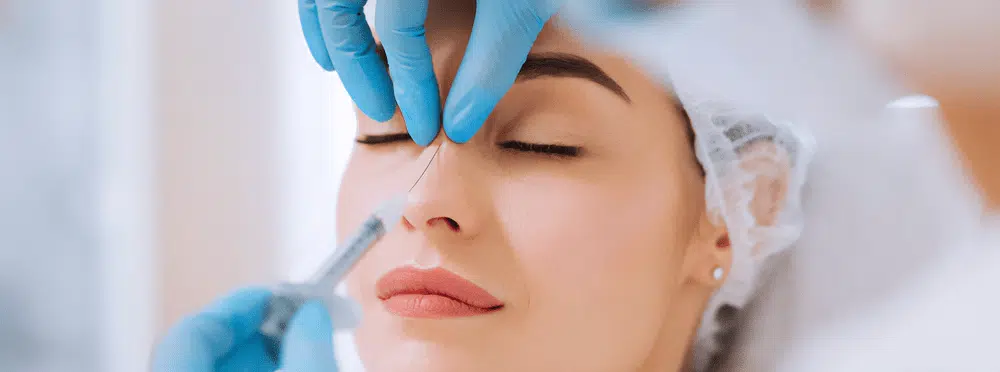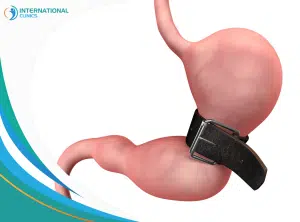To make your nose smaller, surgeons must remove and reshape excess cartilage and bone. Conventionally, they use rasps, hammers, and surgical chisels to do the job and perform rhinoplasty.
Recently, however, a new type of surgery called “ultrasonic rhinoplasty” has started to gain momentum among people interested in plastic surgery in Turkey.
This cutting-edge method uses piezoelectric-powered inserts that vibrate with ultrasonic waves, allowing surgeons to more precisely and safely cut into the bone and hard cartilage of the nose. The ultrasonic technology for nose surgery has been a matter of many scientific reviews and studies throughout the last two decades.
Nonetheless, rhinoplasty in Turkey has evolved into a more complex process, but many aspects of the procedure have remained untouched. Despite advancements in comprehending the anatomy and workings of the nose, most surgeons still carry out the same fundamental procedure.
What Is Ultrasonic Rhinoplasty?
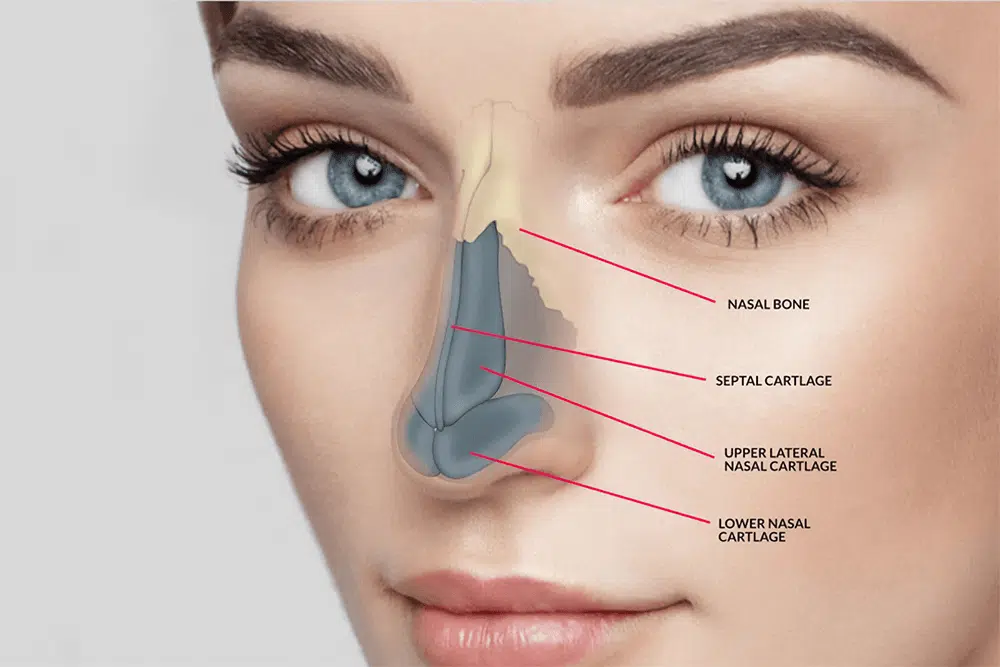
Ultrasonic rhinoplasty, also called ultrasonic nose job or Piezotome, is a revolutionary and less invasive form of nose surgery that can reduce the size and reshape the nose with minimal risk compared to traditional rhinoplasty.
During a conventional rhinoplasty, surgeons manipulate nasal bone and cartilage using tools like rasps and chisels, which can cause damage to the nasal structure and surrounding tissue, leading to increased bruising, swelling, and post-operative discomfort that may negatively impact the final cosmetic outcome.
In 2004, Dr. Massimo Robiony introduced ultrasonic nose job or piezoelectric inserts (PEI), which use high-speed sound waves to vibrate tiny cutting and shaving tip inserts. By avoiding damage to surrounding soft tissue, this technology enables surgeons to reshape the nose with incredible accuracy, achieving the desired cosmetic outcome while minimizing trauma and discomfort.
This innovative approach is a game-changer for patients seeking a more refined and proportionate nose. The use of piezoelectric inserts (PEI) is highly selective, capable of targeting bones and hard cartilage while avoiding harm to soft tissues such as skin and delicate cartilage. According to a recent study, the technology has been improved and its applications for rhinoplasty have been expanded, especially through the use of an ” ultrasonic bone aspirator (UBA)”.
The theory behind this innovative technique is that by reducing surrounding trauma, there will be less surgical bleeding, bruising, swelling, and pain from a rhinoplasty procedure. Additionally, it should result in a more accurate cosmetic outcome, leading to less need for revision surgery.
However, the device can only be used in open rhinoplasty procedures that require external skin incisions. Despite these differences, the ultrasonic technique has the potential to revolutionize rhinoplasty by providing a safer and more effective approach to the procedure.
Ultrasonic Rhinoplasty Pros and Cons
Ultrasonic nose job is very popular amongst a selected number of surgeons in Europe and Turkey, and the device used in this technique was approved by the FDA in 2017. Currently, only a small number of plastic surgeons offer this innovative procedure.
However, as time goes on, the technique will become more widely available, offering patients a greater range of options for changing the shape of their noses. Indeed, the ultrasonic nose job is expected to rival other types of popular nose surgeries, such as liquid nose job. Below is a brief mention of the pros and cons of the procedure:
Pros of Ultrasonic Nose Job
- Can lead to less surgical trauma, causing less post-operative bruising, swelling, and pain.
- Uses high-speed ultrasonic sound waves instead of conventional surgical tools.
- Highly selective as it can target bone and hard cartilage while avoiding harm to soft tissues.
- Help achieve a more refined and proportionate nose that perfectly complements your unique facial features.
- Correct a deviated septum, which often leads to breathing difficulties.
- Can narrow the nasal bridge and reduce the nose profile.
- Lead to minimal, almost negligible scars.
Cons of Ultrasonic Nose Job
- Can only be used in open rhinoplasty procedures because the instruments require more space.
- Higher risk of swelling in the first 48 hours after surgery due to the open surgical technique used.
- Surgeons need to expose the skin of your nose more extensively to fit the device.
- Requires external skin incisions to expose nasal structures.
Candidates for Ultrasonic Rhinoplasty
For people seeking a non-invasive approach to improve the size and shape of their nose, an ultrasonic nose job may be an optimal solution. Surgeons often recommend this procedure to those who:
- Suffered a traumatic injury to the nose which has affected its appearance and function.
- Seek a more precise and accurate nose bone sculpting
- Have the desire to remove a dorsal hump with minimal trauma
- Have bony irregularities on the nasal bridge
- have concerns about the appearance of their nose
- In good physical and mental health with no underlying medical conditions
- Experience difficulties breathing through the nose or suffer from loud snoring
- Have realistic expectations for what the procedure can achieve
- At least 18 years old
Ultrasonic Rhinoplasty Results
This advanced procedure is designed to treat cosmetic concerns and bring astonishing results, especially when it comes to the following aspects:
- Nose Size: If you’re unhappy with the size of your nose, an ultrasonic nose job can help reduce the nose size quite dramatically. It also allows for extensive nasal bone contouring and changes to the nasal cartilage and skin, especially when combined with facelift.
- Nose Shape: The procedure can reduce bumps and dorsal humps on the nose by precisely altering the nasal bone using ultrasonic waves. An open rhinoplasty approach is used in most cases to achieve maximum visualization.
- Nose Angle: Different factors, such as genetics or nasal trauma, can cause a crooked nose or nasal deviation that affects the angle of your nose. But don’t worry, an ultrasonic nose job can address these concerns with surgical precision.
Ultrasonic Rhinoplasty Before and After
If you’re considering an ultrasonic nose job, it’s normal to wonder what kind of results you might expect, and that may propel you to search for before and after images for the procedure.
In any case, you must know that each patient is different, and their unique needs and goals will impact before and after results. Often, the patient’s nose might appear too large, bulbous, or crooked before the procedure.
After an ultrasonic nose job, however, the patient’s nose may look more balanced and proportional to their facial features. The bridge of the nose may be narrower and smoother with a straighter profile. Below is some before and after pictures of people who underwent ultrasonic nose job:
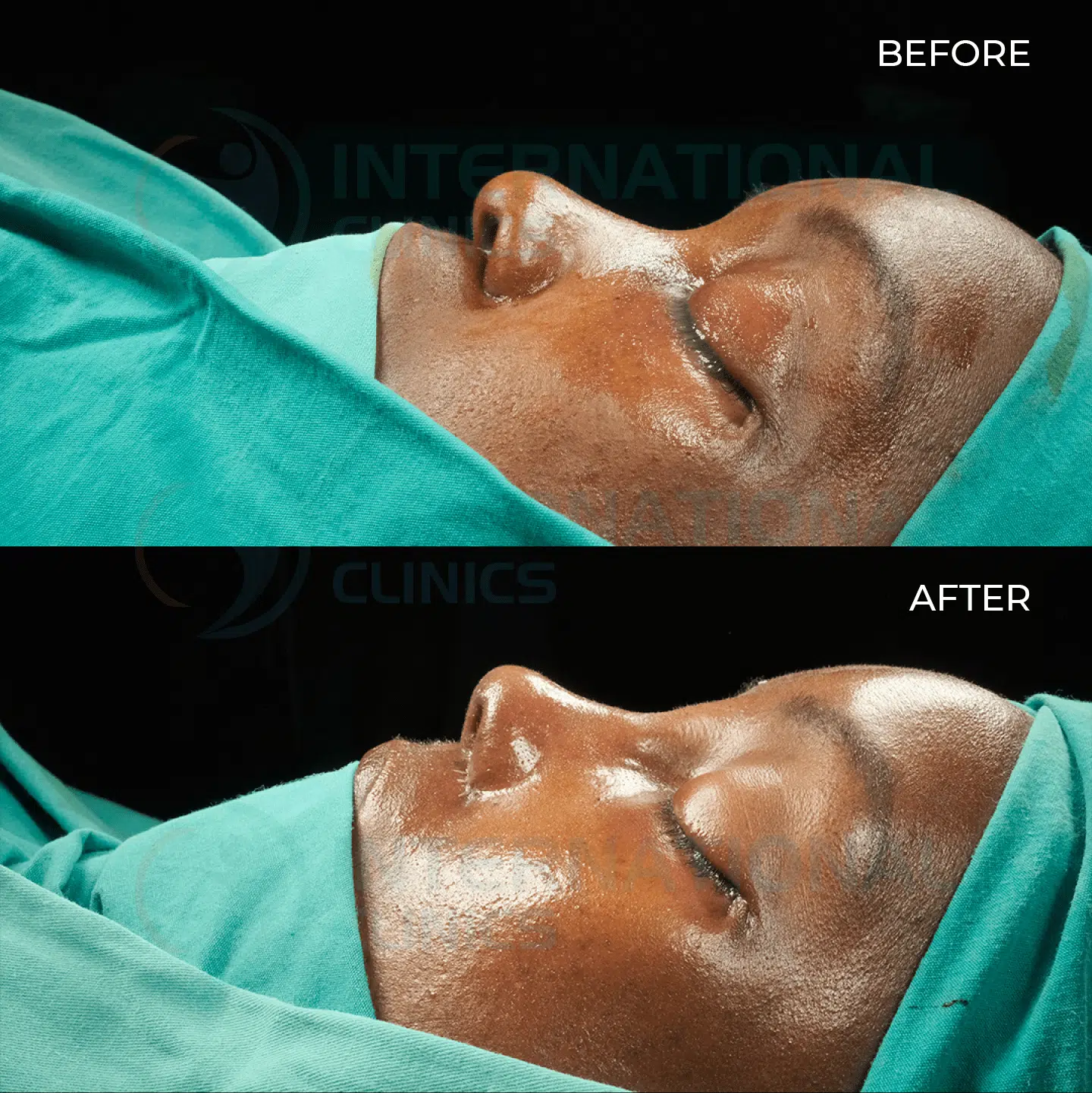
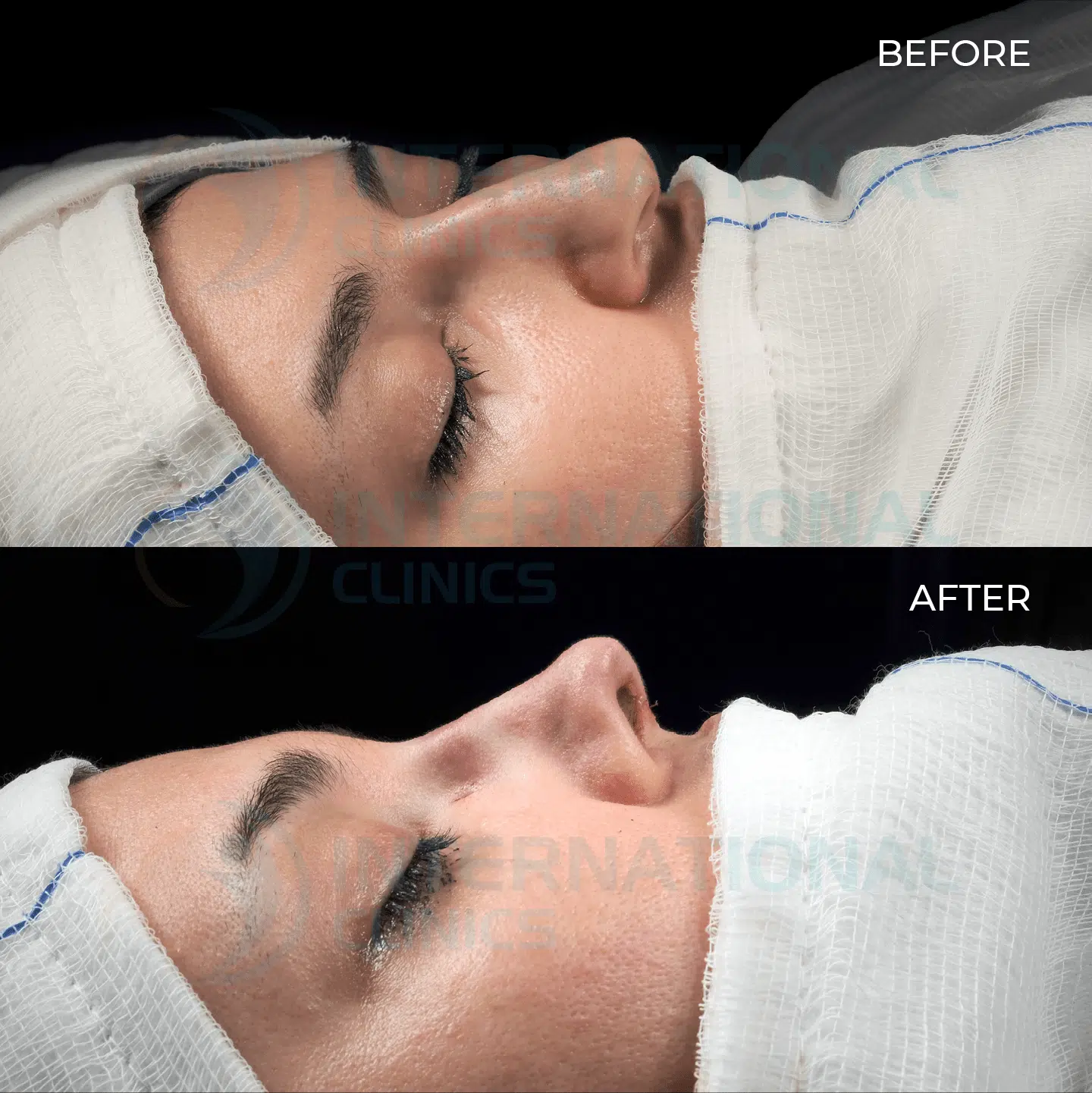
Ultrasonic Rhinoplasty vs Traditional Rhinoplasty
Ultrasonic nose job offers a much gentler and less traumatic approach to nose reshaping than traditional methods. Rather than using rasps, chisels, and hammers to manipulate the bone and cartilage, the ultrasonic technique precisely cuts or removes the nasal bones.
Traditional instruments can cause accidental fractures and additional trauma to the surrounding tissue, leading to unwanted swelling and scarring postoperatively. In contrast, piezoelectric inserts used in ultrasonic nose jobs work selectively on the hard cartilage and bone inside the nose and avoid injury to the surrounding soft tissue. Plastic surgery prices in Turkey are usually lower than prices in other places.
In sum, the differences between the ultrasonic nose job and traditional rhinoplasty in terms of approach, scarring, cost, and other criteria are shown in the next table:
| Ultrasonic Rhinoplasty | Traditional Rhinoplasty | |
| Approach | Uses an ultrasonic device to gently sculpt the bone and cartilage without breaking them | Involves breaking and reshaping the bone and cartilage of the nose using an osteotome or chisel |
| Precision | More accurate and precise | Less accurate and precise |
| Recovery Time | Has a faster recovery time due to its less traumatic nature | Has slower recovery time with more potential swelling and bruising |
| Hospital Stay | Performed as a day case and doesn’t need a hospital stay | May need a hospital stay |
| Scarring | Results in smaller incisions and less scarring | Results in more incisions and more scarring |
| Cost | More expensive than traditional rhinoplasty due to using specialized tools and devices | Average cost |
Risks of Ultrasonic Rhinoplasty

Ultrasonic nose job is an innovative surgical approach that utilizes a specialized instrument known as a piezoelectric device to sculpt the bones in the nose with great precision. However, like all surgical procedures, there are potential risks and complications associated with this technique. Including:
- Bleeding or blood vessel injury, which is the most common risk
- Infection, which may require antibiotics or additional surgical intervention to treat. Nerve damage, which can result in temporary or permanent numbness, tingling, or weakness in the nose.
- Potential complications related to general anesthesia, such as allergic reactions and breathing difficulties.
- Septum perforation, which leads to bleeding, pain, and difficulty breathing.
- Asymmetry or an unnatural appearance of the nose, particularly if the surgeon is not experienced
- Airway obstruction, especially if too much bone or cartilage is removed or if the internal structure of the nose is altered in a way that impairs breathing.
- Scarring, but piezoelectric rhinoplasty typically results in less scarring compared to traditional rhinoplasty techniques.
Ultrasonic Rhinoplasty Cost
The rhinoplasty cost in Turkey is subject to different factors, such as location or country, the surgeon’s level of expertise, and the intricacy of the procedure. In most cases, the ultrasonic nose job isn’t cheap, except in selected countries, such as Turkey.
Clinics and hospitals often charge higher fees for this technique compared to conventional rhinoplasty due to its status as a safer, more advanced method that requires specialized tools and training. In any case, the table below provides an estimated cost for the procedure in different countries:
| Turkey | 3500-4000 US dollars |
| United States | 5000-10000 US dollars |
| United Kingdom | 4500-7000 US dollars |
| Germany | 4000-6000 US dollars |
| Japan | 4000-8000 US dollars |
| Australia | 5000-9000 US dollars |
| Canada | 7000-10000 US dollars |
The Bottom Line
Ultrasonic nose job or rhinoplasty is a truly innovative technology that comes with many benefits and can yield striking results. Although the procedure is expensive and there are a handful of surgeons who mastered this technique, people still can get the opportunity to have the procedure in countries such as Turkey.
International Clinics in Turkey is one of the leading providers of rhinoplasty procedures in Turkey. You can reach us immediately using the Contact Us button below. We’re glad to offer a free consultation to patients from around the world.
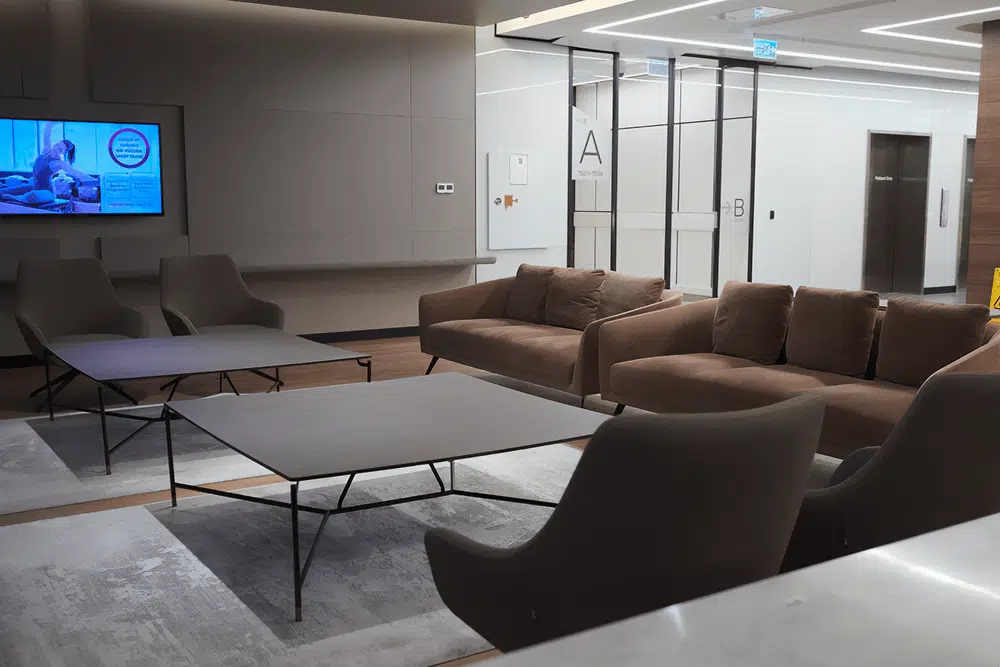
Frequently Asked Questions (FAQs)
Is Ultrasonic Rhinoplasty Better?
Ultrasonic nose job or rhinoplasty is better because it uses a less traumatic method to reshape the nose compared to the traditional nose job. In addition, patients experience less swelling and bruising after this procedure.
What Are the Disadvantages of Ultrasonic Rhinoplasty?
The disadvantages of ultrasonic rhinoplasty include different limitations and complications. For starters, the procedure is only performed during an open rhinoplasty procedure and its instruments require more space in the nose. It can also lead to certain complications, such as bleeding, infection, etc.
What Is the Difference Between Rhinoplasty and Ultrasonic Rhinoplasty?
The difference between rhinoplasty and ultrasonic rhinoplasty lies in the instruments and surgical steps that surgeons should follow to carry out nose reshaping. ultrasonic nose job relies on high-speed sound waves, while traditional rhinoplasty relies on rasps and chisels.
How Long Does Ultrasonic Rhinoplasty Take to Heal?
Ultrasonic rhinoplasty takes around 7-14 days to heal. During this period, you may feel some discomfort, swelling, or pain, which can be subsided with time using over-the-encounter medications.
Is Ultrasonic Rhinoplasty Haram?
Ultrasonic rhinoplasty isn’t haram for Muslims. There are no forbidden materials or tools used during the procedure. Plus, the procedure is safe and can yield great results.
What Is the Easiest Rhinoplasty?
The easiest rhinoplasty is liquid rhinoplasty or a nonsurgical nose job. It’s called also a “15-minute nose job”. Another easy option is tip plasty, which doesn’t involve any reshaping of the nasal bones or the upper nasal cartilage.
Read more: Otoplasty in Turkey: Advantages & Costs

